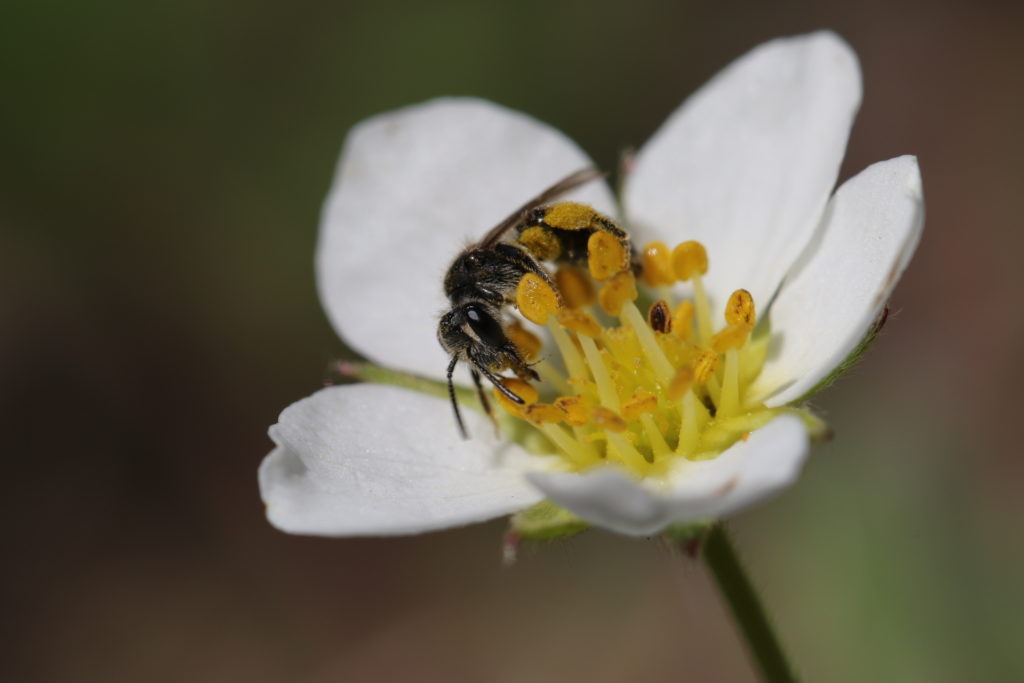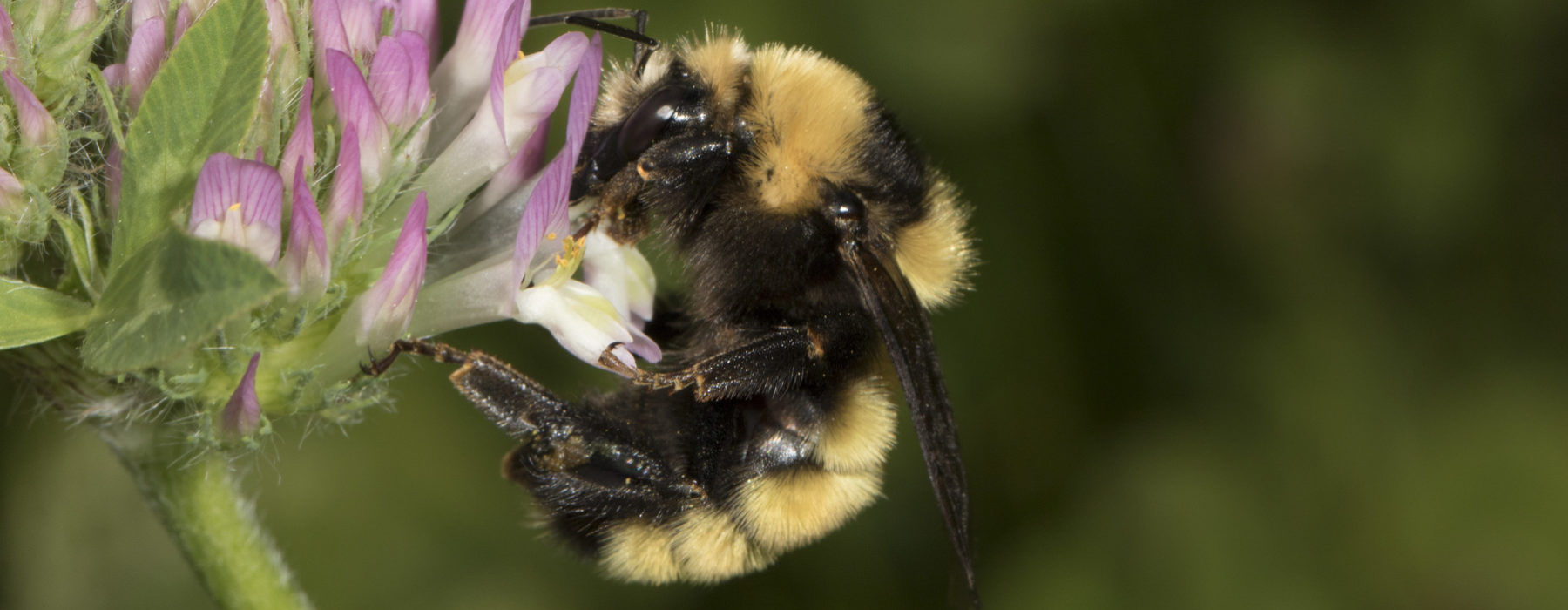We all know “April showers bring May flowers”—that is unless the lawnmower gets to them first! The well-kept lawn is as American as a cheeseburger and fries—and perhaps as detrimental to the environment. Lawns are the single largest irrigated “crop” in the US, making up 2% of the land area of the country. Unlike other crops in the country, lawns don’t feed anyone, including wildlife.
While this should alarming anyone concerned about land and biodiversity conservation, it also presents an enormous opportunity. By simply doing nothing, the average homeowner can increase the diversity (and carbon sequestration) of their neighborhood. No-Mow-May was initially popularized in Britain but is rapidly gaining traction in this country. And it represents a great first step to increasing biodiversity conservation at home.

A Rose-miner Bee (Andrena melanochroa): one of many native species that would appreciate it if you left the lawn mower in the shed. © Spencer Hardy
The idea is simple: by not mowing during the month of May, more flowers will have time to mature and provide an important resource for many spring bees and other pollinators. A recent study from the University of Massachusetts found that mowing every three weeks resulted in 2.5 times more flowers than more frequent mowing. Depending on the specifics of the yard, many of the flowers that appear will be plants traditionally considered “weeds”—think dandelions, ground-ivy, and clovers. While these non-native “weeds” are certainly better than turf grass, many native plants can also thrive in unmowed lawns including violets and wild strawberries—both of which are hosts to specialist bees.
Ideally, the excitement of more backyard flowers (and less lawnmower noise) will lead to reduced total lawn size and more intentional wildlife plantings that last much longer than one month. For more information about creating pollinator habitat, check out our list of resources. And don’t forget the sign explaining to your neighbors why your lawn is so much more colorful!







